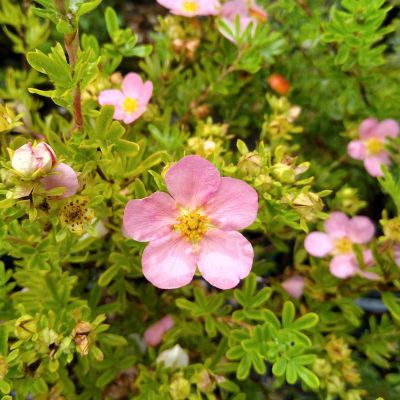How To Plant A Shrub

When To Plant
Most shrubs will do best when planted in autumn, or in early spring. This gives them a chance to get their roots established before the cold of winter or the demands of the growing season.
Before You Plant
When selecting a shrub, there are several things to consider. Make sure your chosen plant will suit the position and environment you want to plant it in, taking into consideration its light requirements and expected size.
Some plants, such as rhododendrons and camellias, have particular soil requirements as well. If you need to improve your soil’s structure, alter its pH, or add nutrients, it is best to do so before you plant.
The Planting Process
- Make sure your shrub is well watered before you plant it; the easiest way to do this is to stand it in a bucket so that it can absorb the water from below.
- Dig a hole to the depth of the shrub’s pot or the height of its rootball, and two-to-three times as wide.
- Loosen the roots if they are compacted or circling.
- Place the plant in the hole and step back to see if the position looks right, repositioning if not. Once you’re satisfied, be sure to check that the top of the rootball is even with or slightly higher than the hole, so that you don’t bury the shrub’s stems.
- Refill the hole, firming the soil in around the rootball to eliminate air pockets.
- Water in; you can create a watering well by building up a mound of soil in a ring around the plant, to help direct the water to its roots.
- Add a mulch, if desired. This helps the soil retain water, prevents weeds sprouting, and can add a decorative flourish.
Planting In Containers
Many shrubs can be planted in containers, and the process of planting is largely the same as above. This is best for smaller or drought-tolerant shrubs, and can be useful for plants with specific soil requirements, such as azaleas.
To get the best of containerised shrubs:
- Check the final size of your plant and be sure the pot is large enough to allow the shrub room to grow.
- Water regularly, as containers can dry out quickly. Don’t ignore the pot’s drainage, though, as your plant will not want to be standing in water for long amounts of time.
Planting For Hedges
Many shrubs are also excellent hedging plants, and the process for planting these is also the same as above. Rather than digging individual holes, it can be beneficial to dig one long trench to place them into.
- Dig over the area that your hedge is to be planted in, and then dig a trench to the required size.
- Check your plants’ information label for their expected size and recommended spacing, and position regularly along the length of your trench. Larger plants may be best planted in a staggered pair of rows.
- Water in well and, as the plants grow, they should merge into one another, to create an unbroken line of hedge.
